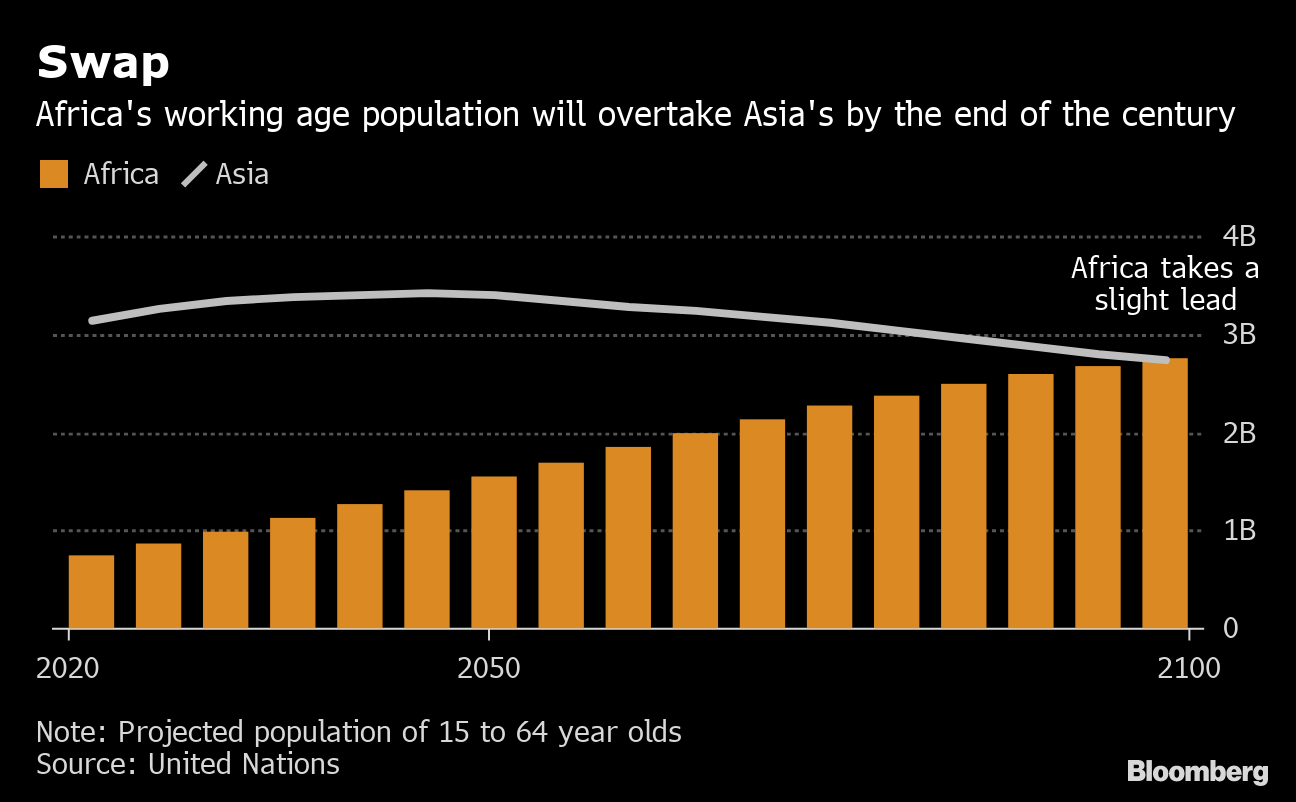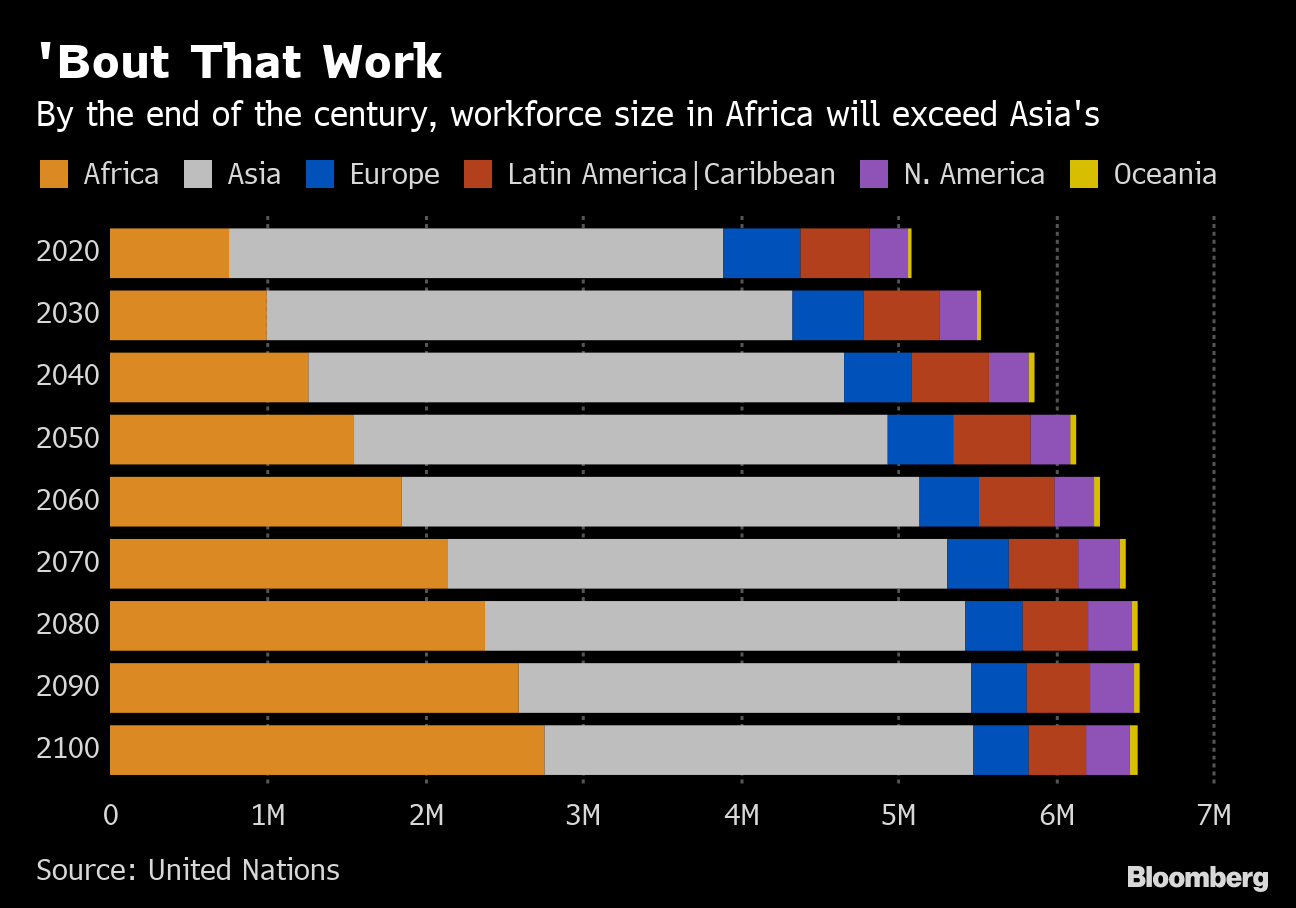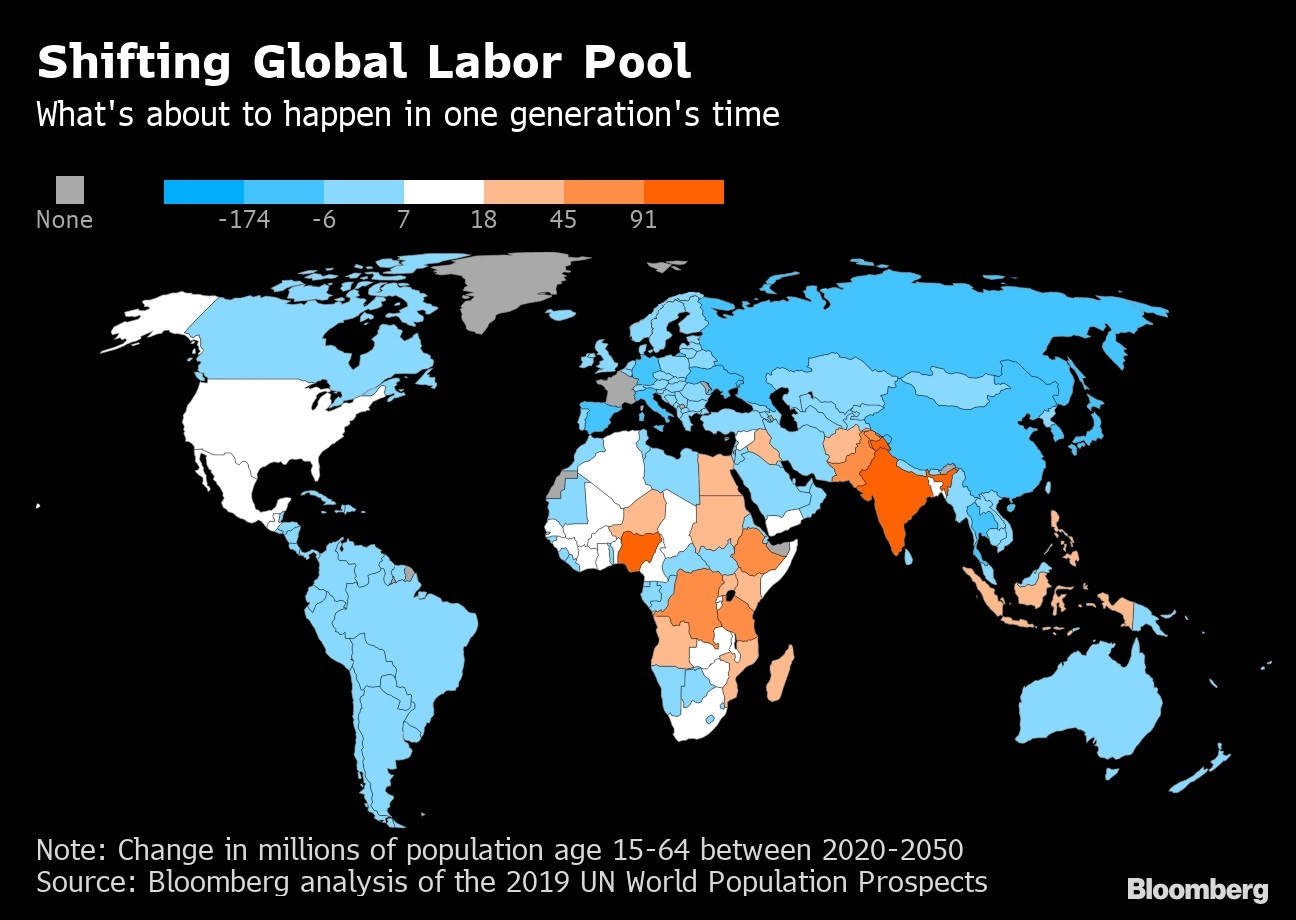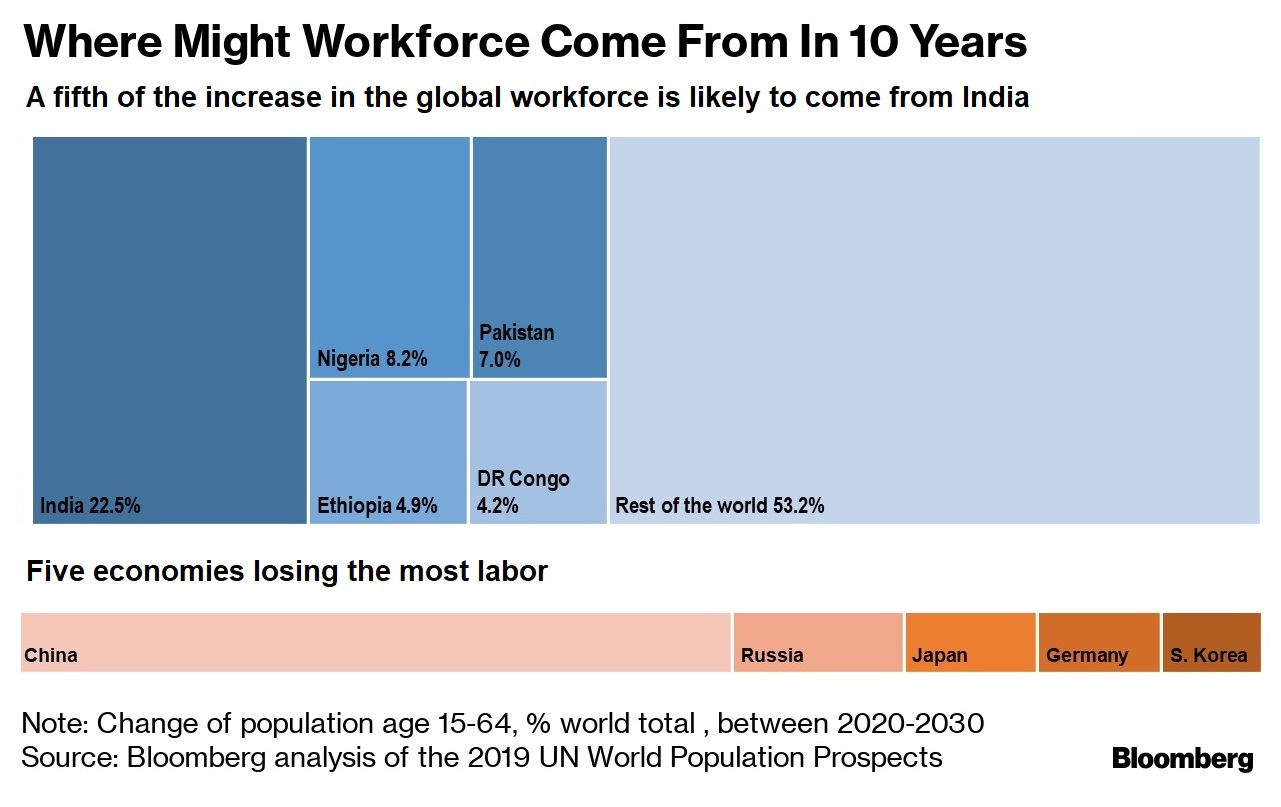Africa’s potential workforce will likely be larger than that of Asia by the end of the 21st century as both continents wrestle with different demographic and economic challenges.
The number of 15-to-64-year-old Africans today is a quarter of the size of Asia’s working-age population. By 2100, however, Africa will surpass Asia, a Bloomberg analysis of United Nations World Population Division data shows. Asia will be confronted by an aging population, while the shift in Africa will be toward more youth in need of employment.

One caveat for African nations: A fast-growing economy typically requires a robust and growing working-age population and it isn’t clear that economies on the continent will expand enough to provide employment for job seekers. Further, it’s not clear potential employees will have the skills those jobs require.
The number of available employees worldwide will rise an estimated 29% to 6.5 billion from 5 billion by the end of the century. Africa’s share will jump to more than a third around 2100 from almost 15% currently, according to the Bloomberg analysis. The continent’s working-age population will grow by 2 billion to 2.75 billion in the next 80 years, while Asia’s will decline by 415 million, or 13%, the projections show.

Globally, the total number of people age 15 to 64 will peak at 6.5 billion around 2090, an increase of 1.5 billion from today. Nearly 80% of this gain is to expected to come from low-income countries, with the remainder from middle-income nations. The potential labor force in high-income countries is projected to shrink as birth rates remain low.
The demographic changes will occur in a relatively short period of time. In 2020, everyone over 65 will be supported by an estimated seven workers globally, but by mid-century the ratio will drop to four as the share of seniors increases.

These shifts will create challenges for governments in a number of countries. Taxation, assets prices and the use of resources will come under pressure while innovations in artificial intelligence, machine learning, engineering and computing power may cause trepidation about employment within many industries.
A recent Oxford Economics report estimates that 20 million manufacturing positions will be lost by 2030 with lower-skilled regions hit the hardest. Oxford’s econometric model found that, on average, each newly installed robot displaces 1.6 manufacturing workers. About 1.7 million factory jobs already have gone to robots since 2000, including 400,000 in Europe, 260,000 in the U.S. and 550,000 in China, the report found.
The labor force in North America and Oceana will increase by close to 38 million and 17 million, respectively, while Europe will experience a decline of 137 million or 28%. The working-age population in Latin America and the Caribbean will shrink by 15% or 66 million.
While birth rates have fallen sharply in much of the developed world, migration has enabled the population in North America to continue growing. The number of working-age men and women in the U.S. will rise 1.2% to 243 million by 2030 and then climb 14% to 278 million by 2100. The number of people in North America living longer 100 years will soar to almost 1.9 million from about 1 million today.
The two most populous nations also are aging fast. By 2050, China and India will account for 31% of total population and 39% of the world’s seniors. Meanwhile both will see their share of the global labor force shrink. India’s working-age population is projected to peak around 2050, but 40 years later there will be fewer 15-to-64-year-olds than there are today.
Here are three graphical views on the gainers and losers by country:
